| Listing 1 - 10 of 17 | << page >> |
Sort by
|
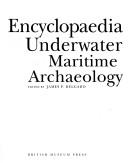
ISBN: 0714121290 Year: 1997 Publisher: London British Museum Press
Abstract | Keywords | Export | Availability | Bookmark
 Loading...
Loading...Choose an application
- Reference Manager
- EndNote
- RefWorks (Direct export to RefWorks)
History as a science --- Archeology --- Underwater archaeology --- Derelicts --- Underwater exploration --- Archéologie sous-marine --- Epaves --- Exploration sous-marine --- Encyclopedias --- Encyclopédies --- Archéologie sous-marine --- Encyclopédies
Book
ISBN: 1280772409 9786613683175 1603443819 9781603443814 9781603444729 1603444726 9781280772405 6613683175 Year: 2012 Publisher: College Station
Abstract | Keywords | Export | Availability | Bookmark
 Loading...
Loading...Choose an application
- Reference Manager
- EndNote
- RefWorks (Direct export to RefWorks)
In 2001, while vacationing on Panama's Pacific coast, maritime archaeologist James P. Delgado came upon the hulk of a mysterious iron vessel, revealed by the ebbing tides in a small cove at Isla San Telmo. Local inquiries proved inconclusive: the wreck was described as everything from a sunken Japanese ""suicide"" submarine from World War II to a poison-laden ""craft of death"" that was responsible for the ruin of the pearl beds, decades before. His professional interest fully aroused, Delgado would go on to learn that the wreck was the remains of one of the first successful deep-diving submersibles, built in 1864 by Julius H. Kroehl, an innovator and entrepreneur who initially sought to develop his invention for military use during the Civil War. The craft's completion coming too late for that conflict, Kroehl subsequently convinced investors that it could be used to harvest pearls from the Pacific beds off Panama, in waters too deep for native pearl divers to reach. In Misadventures of a Civil War Submarine, Delgado chronicles the confluence of technological advancement, entrepreneurial aspiration, American capitalist ambition, and ignorance of the physiological effects of deep diving. As he details the layers of knowledge uncovered by his work both in archival sources and in the field excavation of Kroehl's ill-fated vessel, Delgado weaves the tangled threads of history into a compelling narrative. This finely crafted saga will fascinate and inform professional archaeologists and researchers, naval historians, students and aficionados of maritime exploration, and interested general readers.
Pearl industry and trade --- Shipwrecks --- Submersibles --- German-Americans --- Engineers --- Jewelry trade --- Marine disasters --- Wrecks --- Adventure and adventurers --- Marine accidents --- Voyages and travels --- Collisions at sea --- Submergibles --- Undersea vehicles --- Underwater vehicles --- Vehicles --- Engineering personnel --- German Americans --- Ethnology --- Germans --- History --- History. --- Kroehl, Julius, --- Kröhl, Julius, --- Pacific Pearl Company --- Sub Marine Explorer --- Explorer (Submarine) --- United States --- Naval operations --- Submarine. --- Submarine operations
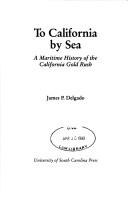
ISBN: 0585361487 9780585361482 1570031533 Year: 1996 Publisher: Columbia, S.C. University of South Carolina Press
Abstract | Keywords | Export | Availability | Bookmark
 Loading...
Loading...Choose an application
- Reference Manager
- EndNote
- RefWorks (Direct export to RefWorks)
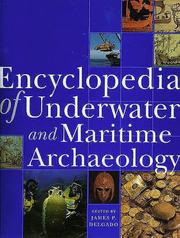
ISBN: 0300074271 9780300074277 Year: 1997 Publisher: New Haven: Yale university press,
Abstract | Keywords | Export | Availability | Bookmark
 Loading...
Loading...Choose an application
- Reference Manager
- EndNote
- RefWorks (Direct export to RefWorks)
From shipwrecks to drowned cities, spectacular underwater discoveries often reveal much about our history. Archaeologists working in the deep ocean, in lakes and rivers, and on buried waterfronts in the heart of the world`s great cities encounter substantial remains of ships and seafaring ritual deposits or the drowned cities of ancient settlements almost daily. The Encyclopedia of Underwater and Maritime Archaeology is the first comprehensive reference book on the discovery and recovery of the submerged past. Written by archaeologists and other scientists who have made the discoveries, the encyclopedia`s entries describe sites around the world and across time: prehistoric American Indian settlements; submerged Bronze and Iron Age settlements; sunken Phoenician, Greek, and Roman cities and harbors; Viking ship burials; ancient warships and merchant craft in the Mediterranean; warships sunk during atomic bomb tests; and much more. Detailed entries also cover new fields of research in underwater and maritime archaeology, the techniques and tools used by underwater archaeologists, ethical issues and the relevant legislation that has been passed, and important institutions and individuals. Overview articles examine work in broader regional, national, and scientific contexts. Extensively illustrated and easy to read, cross-indexed, and written by an international team of experts, the Encyclopedia of Underwater and Maritime Archaeology will be the standard reference work on the subject for years to come.
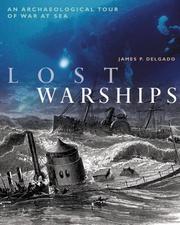
ISBN: 1550548336 Year: 2001 Publisher: Vancouver : Douglas & McIntyre,
Abstract | Keywords | Export | Availability | Bookmark
 Loading...
Loading...Choose an application
- Reference Manager
- EndNote
- RefWorks (Direct export to RefWorks)
Archéologie sous-marine. --- Naufrages. --- Histoire navale.
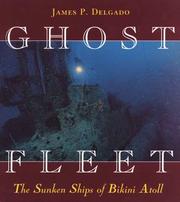
ISBN: 0824818644 0824818687 Year: 1996 Publisher: Honolulu : University of Hawai'i Press,
Abstract | Keywords | Export | Availability | Bookmark
 Loading...
Loading...Choose an application
- Reference Manager
- EndNote
- RefWorks (Direct export to RefWorks)
Shipwrecks --- Operation Crossroads, Marshall Islands, 1946.

ISBN: 0872496732 Year: 1990 Publisher: Columbia University of South Carolina Press
Abstract | Keywords | Export | Availability | Bookmark
 Loading...
Loading...Choose an application
- Reference Manager
- EndNote
- RefWorks (Direct export to RefWorks)
Book
ISBN: 178096238X 1780962479 Year: 2009 Publisher: Oxford, England ; New York, New York : Osprey Publishing,
Abstract | Keywords | Export | Availability | Bookmark
 Loading...
Loading...Choose an application
- Reference Manager
- EndNote
- RefWorks (Direct export to RefWorks)
The obliteration of Hiroshima and Nagasaki in August 1945 brought the world to a stand still. This unimaginable shock confirmed to the world that the race to develop a working atomic weapon during World War II had been won by the American-led international effort. Horrific and controversial even today, these first uses of the atomic bomb had intense ramifications not only on the continued development of the bomb, but also on politics and popular culture. As well as the technological development, historian James Delgado also examines how the US Army Air Force had to develop the capacity to deliver the weapons, and examines the sites where development and testing took place, in order to give a comprehensive history of the dawning of the nuclear age.
Atomic bomb --- Atomic bomb --- Atomic bomb --- History --- History --- Testing.
Book
Year: 2013 Publisher: Silver Spring, Maryland : NOAA s Office of National Marine Sanctuaries,
Abstract | Keywords | Export | Availability | Bookmark
 Loading...
Loading...Choose an application
- Reference Manager
- EndNote
- RefWorks (Direct export to RefWorks)
Shipwrecks --- Underwater archaeology --- Underwater exploration --- Multibeam mapping --- Marine accidents --- History. --- Robert J. Walker (Ship)
Book
ISBN: 1640123202 1640123229 1640121692 9781640123205 9781640123229 9781640121690 9781640123212 Year: 2020 Publisher: [Lincoln]
Abstract | Keywords | Export | Availability | Bookmark
 Loading...
Loading...Choose an application
- Reference Manager
- EndNote
- RefWorks (Direct export to RefWorks)
"David W. Jourdan recovers the sunken history of the Japanese cargo-carrying submarine "I-52," exploring air-sea-undersea warfare and Japanese technology during World War II."--
World War, 1939-1945 --- Submarines (Ships) --- Naval operations --- Submarine. --- Naval operations, Japanese. --- Aerial operations, American. --- Naval operations, American. --- Salvaging --- I-52 (Submarine) --- Submarine boats --- Subs (Ships) --- Submersibles --- Warships --- Submarine operations --- Momi (Submarine)
| Listing 1 - 10 of 17 | << page >> |
Sort by
|

 Search
Search Feedback
Feedback About UniCat
About UniCat  Help
Help News
News